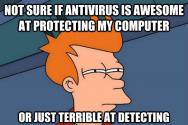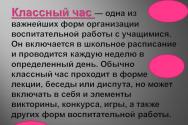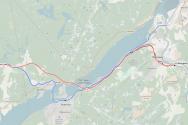Quick Reading Textbook. Book review: Tony Buzan's Speed Reading Textbook Tony Buzan Speed Reading
Tony Buzan Quick Reading Textbook chapters 6 -10(theory)
The book offers an effective program
allowing to significantly enhance
work and interaction of the eyes and brain
in the process of reading literature.
CHAPTER 7
Go Super Fast Reading: The Speed Reading Hall of Fame
CHAPTER 8
Meta-pointing - the path to reading at the level of "photographic memory"
CHAPTER 9
Develop advanced sliding and scanning skills
CHAPTER 10
Your relativistic mind. Increase your reading speed with a new metronome training method CHAPTER 6
Eye control pointer - a new method for fast and wide-ranging reading
In the realm of thinking, the first step is often the most difficult. Subsequent steps become increasingly easier. The more you study, the easier it is for you to study further.
INTRODUCTION
In this chapter it is said that the eyes need a “pointer” when reading, about how best to use such a “pointer”. This method reduces bounce and
regression, increases reading speed and reading comprehension, increases the number of words learned per suspension, and is much easier on the eyes.
WHO IS RIGHT - THE CHILD OR THE EDUCATION SYSTEM.
The kid puts his finger on the printed page. We immediately tell the child to remove his finger, because we know that this method slows down his progress towards the goal. Why does the child do this in the first place? To ensure focus and concentration. Are we then doing the right thing when we tell him to remove his finger? After all, logically speaking, if the finger were in actually slowed down the reading, it would have been much more correct to ask the baby to move it faster, maintaining focus and concentration!
Let's take a deeper look at the problem by asking ourselves a few additional questions.
Do you sometimes use your index finger, pinky finger, pencil, pen, or other form of visual guidance when:
1) look for a number in the phone book
2) look up the meaning of the word in the dictionary
3) looking for information in an encyclopedia or reference book
4) add up a column of numbers
5) concentrate on the place you are going to take notes on
6) show someone the place in the text to which you want to draw their attention
7) just read
Most people will answer yes to at least half of these questions, and many will answer yes to all but the last one.
Isn't it extremely strange that we use a pointer in almost every situation, except ordinary reading, where we were explicitly instructed don't do something for which we had a natural inclination.
In fact, this prejudice is so deeply ingrained that if you walked into the office of one of the directors of the company and saw him reading a book and at the same time running his finger along it, your opinion of the level of the director's intelligence would sharply decrease!
So where is the truth in this matter? What is the best way to read - with or without a pointer?
Let's establish this through experiment.
Experiment
This experiment has two parts and is best done with a partner.
First, you sit facing each other at a distance of 60 cm, with your arms crossed over your chest and your heads motionless.
Now let one of you imagine an ideal circle with a diameter of about 45 cm. It should be at a distance of 30 cm in front of the eyes. The person who presented this circle slowly traces its outline with his eyes, and the second partner peers very carefully at the first to accurately trace how his eyes work.
The participant in the experiment who has imagined a circle should have the feeling that he is moving his eyes exactly along the perimeter of the circle.
Rice. 6a. A figure representing the movement of the eye, which moves along the contour of a circle without assistance.
Rice. 6b. Figure showing the movement of the eye as it moves around the outline of a circle using a "pointer"
At this stage, you should not exchange information about what exactly each of you sees or experiences.
Then you need to switch roles so that now the second participant imagines a circle and looks around it, while the first one follows the movements of his eyes. At the end of the experiment, exchange information about what each of you saw from your partner's eye movements and what you yourself felt when you traced the imaginary circle.
Almost always, the first part of the experiment will produce a figure whose shape is very far from a circle! It will look like the broken polygon shown in Fig. 6a. Most people will find this exercise difficult.
In the second part of this experiment, you and your partner sit down in the same way. This time, one of the participants helps the other by drawing a perfect circle with his index finger. Anyone who previously could not track an imaginary circle now perfectly follows his partner’s finger along the entire contour, recording to himself what his eyes experience when they move after the finger. The participant who serves as a “pointer”, as before, carefully observes the movement of the partner’s eyes. Then the roles of the participants change again, and at the end of the experiment they discuss their own feelings and talk about their observations of their partner’s eyes.
When performing the experiment, do not move your finger too quickly, do not make several circles, and do not try to hypnotize your partner!
In the second part of this simple experiment, most participants will come to the conclusion that the eyes smoothly follow the “pointer” and it is much more convenient to do this than in the first case (see Fig. 6b).
This happens because the human eye programmed so as to follow a moving object, since it is the movement occurring in the environment that contains the main information.
Thus, it appears that the child was right in what he did, just as you were right whenever you used the index to help you with any form of information retrieval. As the experiment just described showed, the eyes become much less tired and more efficient when following a pointer.
WHAT IS THE BEST TIME TO USE THE INDEX?
Since human eyes are programmed to follow a pointer, since you have probably already used your finger as a pointer when reading as a child, and most likely have already used a pointer throughout your life in various situations when reading or searching for information, then you it will be easy to relearn this skill.
It's best to use something long and thin, such as a ballpoint pen, pencil, East Asian chopstick, or knitting needle. Such a pointer will not obscure the text.
For this reason, you should not use your palm or finger for this purpose (unless you have nothing else at hand), since both the finger and especially the palm are too thick and will interfere with your vision.
For best results, simply place the pointer under the line you are reading and move it smoothly as you read. Don't try to jump around with your pointer, covering the ideal groups of words that are to be learned in one pause - if you move the pointer smoothly along the line, your brain itself will give your eyes an indication of where they should pause when reading.
Rice. 7. Illustration showing the correct positioning of the pointer when using it for reading
An important question arises here: is it necessary to move the pointer along the entire line?
The answer to this can be found in the universal belief that those who read quickly read "down the middle of the page." This position is often misinterpreted as if the eyes are moving down the center of the page along a straight vertical line. This is not the case at all. In fact, when reading, the eyes move down along the middle parts pages.
This is because the eyes can see from five to six words at a time, as a result of which they can easily pause long after the beginning and long before the end of each line, thereby capturing information that lies “off to the side” (see Fig. 7 ).
Tony Buzan Quick Reading Textbook chapters 6 -10(theory)
The book offers an effective program
allowing to significantly enhance
work and interaction of the eyes and brain
in the process of reading literature.
CHAPTER 7
Go Super Fast Reading: The Speed Reading Hall of Fame
CHAPTER 8
Meta-pointing - the path to reading at the level of "photographic memory"
CHAPTER 9
Develop advanced sliding and scanning skills
CHAPTER 10
Your relativistic mind. Increase your reading speed with a new metronome training method CHAPTER 6
Eye control pointer - a new method for fast and wide-ranging reading
In the realm of thinking, the first step is often the most difficult. Subsequent steps become increasingly easier. The more you study, the easier it is for you to study further.
INTRODUCTION
In this chapter it is said that the eyes need a “pointer” when reading, about how best to use such a “pointer”. This method reduces bounce and
regression, increases reading speed and reading comprehension, increases the number of words learned per suspension, and is much easier on the eyes.
WHO IS RIGHT - THE CHILD OR THE EDUCATION SYSTEM.
The kid puts his finger on the printed page. We immediately tell the child to remove his finger, because we know that this method slows down his progress towards the goal. Why does the child do this in the first place? To ensure focus and concentration. Are we then doing the right thing when we tell him to remove his finger? After all, logically speaking, if the finger really slowed down reading, it would be much more correct to ask the baby to move it faster, maintaining focus and concentration!
Let's take a deeper look at the problem by asking ourselves a few additional questions.
Do you sometimes use your index finger, pinky finger, pencil, pen, or other form of visual guidance when:
1) look for a number in the phone book
2) look up the meaning of the word in the dictionary
3) looking for information in an encyclopedia or reference book
4) add up a column of numbers
5) concentrate on the place you are going to take notes on
6) show someone the place in the text to which you want to draw their attention
7) just read
Most people will answer yes to at least half of these questions, and many will answer yes to all but the last one.
Isn't it extremely strange that we use the index in almost every situation except ordinary reading, where we have been explicitly instructed not to do something for which we have a natural inclination.
In fact, this prejudice is so deeply ingrained that if you walked into the office of one of the directors of the company and saw him reading a book and at the same time running his finger along it, your opinion of the level of the director's intelligence would sharply decrease!
So where is the truth in this matter? What is the best way to read - with or without a pointer?
Let's establish this through experiment.
Experiment
This experiment has two parts and is best done with a partner.
First, you sit facing each other at a distance of 60 cm, with your arms crossed over your chest and your heads motionless.
Now let one of you imagine an ideal circle with a diameter of about 45 cm. It should be at a distance of 30 cm in front of the eyes. The person who imagined this circle slowly traces its outline with his eyes, and the second partner peers very carefully at the first in order to accurately track how his eyes act.
The participant in the experiment who has imagined a circle should have the feeling that he is moving his eyes exactly along the perimeter of the circle.

 Rice. 6a. A figure representing the movement of the eye, which moves along the contour of a circle without assistance.
Rice. 6a. A figure representing the movement of the eye, which moves along the contour of a circle without assistance.
Rice. 6b. Figure showing the movement of the eye as it moves around the outline of a circle using a "pointer"
At this stage, you should not exchange information about what exactly each of you sees or experiences.
Then you need to switch roles so that now the second participant imagines a circle and looks around it, while the first one follows the movements of his eyes. At the end of the experiment, exchange information about what each of you saw from your partner's eye movements and what you yourself felt when you traced the imaginary circle.
Almost always, the first part of the experiment will produce a figure whose shape is very far from a circle! It will look like the broken polygon shown in Fig. 6a. Most people will find this exercise difficult.
In the second part of this experiment, you and your partner sit down in the same way. This time, one of the participants helps the other by drawing a perfect circle with his index finger. Someone who previously couldn't track an imaginary circle now follows his partner's finger perfectly.
Tony Buzan's book "The Speed Reading Textbook" is a real lifesaver for all those who dream of learning to read quickly.
In addition, the publication will be useful for those who strive not just to “guide” their eyes along the lines of a book, but to remember and competently systematize the knowledge they have acquired.
Is it possible to acquire similar skills on your own just by reading this textbook? It all depends on the desire of the student himself, because the first step in any new business is the most difficult.
But if the process of activating the brain is successful, a person’s quality of life will change instantly. After all, it is enough to accustom your head to “work” once in order to process large volumes of text easily, effectively and profitably in the future.
Is Tony Buzan a modern genius?
Tony Buzan is a psychologist from Britain who is the owner of the world's largest “creative thinking quotient.”
The author is also actively involved in the problem of improving memory in old age. As a result, the author has more than 80 published books on the topic of intelligence and creativity, some of which have become famous throughout the world.
As the founder of several charitable foundations, Buzan devotes a lot of his time to working with people with learning disabilities.
It is for this reason that all of his bestsellers, in particular this book, are not a collection of other people’s developments, but a real author’s textbook.

Prices for Tony Buzan Quick Reading Textbook
How will the book help me?
Today, the book market offers readers more than one publication that promises to improve their speed reading skills by 100%.
But rarely does any book focus on anything other than increasing reading speed itself. After all, there is usually no talk about improving the understanding of read information, as well as “improving” the ability to memorize visually studied text.
What is the difference from similar offers:
- presents old recommendations in a completely new way,
- contains only accessible, understandable techniques,
- helps you evaluate your results “before” and “after”.
How to work with the textbook?
The Quick Reading Textbook contains five sections. The first makes it possible to get a real idea of your reading speed today. The second helps to improve existing results using first simple and then more complex techniques.
Then the teacher’s attention switches to the development of intelligence and memory, and after that the reader gets acquainted with the “eye-brain” system.
Moreover, if you don’t just get acquainted with the manual superficially, but carefully study it, completing all the tasks, then the result will definitely be positive.
Real reviews
Even those readers who studied with the incomplete electronic version of Tony Buzan’s book note that thanks to the recommendations of this manual, they were able to increase their reading speed by more than 20%.
All the other “lucky ones” who work with the printed publication never tire of boasting about their own achievements in almost every review. There is not only a “pumping up” of speed reading skills, but also improvements in memorization, as well as the development of peripheral vision.
At the same time, some readers who leave reviews on various Internet resources claim that the textbook did not help them. In parallel, it is noted that skeptics were still able to assess their current level and the level to which they should reach in the future.
So, as you know, water does not flow under a lying stone, so you can continue to have problems at school, college or at work when trying to quickly and effectively study a large amount of new information.
Or you can purchase this book and start improving your personal performance in the first week of training.
Quick Reading Textbook Tony Buzan
(No ratings yet)
 Title: Quick Reading Textbook
Title: Quick Reading Textbook
About the book "The Quick Reader" by Tony Buzan
The Speed Reader is a guide for those who want to get the most out of their brain. You can often hear that human abilities are actually much more significant than they seem. And to confirm this, Tony Buzan suggests studying unique and really effective methods for improving memory and speed reading. He created a program that reveals human abilities, helping to activate and adjust the functioning of the eyes and brain during the reading process. The created chains of reactions lead to new ones, thanks to which, after a short period of familiarization with the technique, you can not only quickly become familiar with the texts, but also effectively assimilate them.
Tony Buzan himself is a qualified psychologist. Along with a diploma in psychology, he also received education in additional specialties: general sciences, mathematics and English. Today, the author is known throughout the world thanks to his “brainchildren”: the companies “The Brain Foundation” and “Mind Sports Olympiad”, as well as the charitable Brain Trust Fund and the concept of “Mental Literacy”. In 1997, he broke the record for memorizing multi-digit numbers, using developments in the field of developing human abilities.
The book “Quick Reading Textbook” allows you to take the first and many subsequent steps towards the ability to instantly assimilate information. This step does not promise to be simple, but the very first advice of a writer-psychologist will allow you to see amazing results. The key element of the author's method is dynamic reading. Tony Buzan claims that this is a set of working methods that help increase reading speed. It is important that the degree of reading comprehension does not actually change.
Some reading techniques are regularly used in everyday life. Others were known from early childhood. But their combinations and modifications, which are described in the book “Quick Reading Textbook,” are of particular value. The author’s work proposes to study the issues of instantly highlighting the main idea of a text without resorting to deep proofreading. Attention is drawn to methods for eliminating stops and recurrent eye movements, which significantly slow down the speed. Studying the methods proposed in the book “Quick Reading Textbook” allows you to expand your field of vision and create conditions under which perception further develops.
On our website about books lifeinbooks.net you can download for free without registration or read online the book “The Quick Reading Textbook” by Tony Buzan in epub, fb2, txt, rtf, pdf formats for iPad, iPhone, Android and Kindle. The book will give you a lot of pleasant moments and real pleasure from reading. You can buy the full version from our partner. Also, here you will find the latest news from the literary world, learn the biography of your favorite authors. For beginning writers, there is a separate section with useful tips and tricks, interesting articles, thanks to which you yourself can try your hand at literary crafts.
Recently, many textbooks on speed reading have appeared. The textbook by Tony Buzan helps improve the functioning of the eyes and brain while reading books.
Quick Reading Textbook
Name: Quick Reading Textbook
Publisher: Medley
Series or release: Live wisely
Year: 2008
Pages: 25
Language: Russian
Format: pdf, doc/rar
Size: 11.53 Mb
This book proposes an effective program that allows you to significantly enhance the work and interaction of the eyes and brain in the process of reading literature. In the realm of thinking, the first step is often the most difficult. Subsequent steps become increasingly easier. The more you study, the easier it is for you to study further.
Visual angle training for speed reading
Concentrate your gaze on the center. Mark identical blocks with your peripheral vision. The goal is not to find identical blocks as quickly as possible, but to concentrate your gaze on the center of the screen with your peripheral vision and find the necessary information.
Note to the reader:
Dynamic reading is a set of methods that can significantly increase the reader’s reading speed without significant loss of understanding of the book read. In particular, it should be borne in mind that there is no official clear division between “normal” and fast reading methods for the reason that most readers use reading techniques that are familiar to them.Basic techniques of dynamic - fast reading
- Practicing the skill of instantly highlighting the main idea of a text, cutting out useless information and reading effective and useful information.
- Elimination, regression, stops, recurrent eye movements. With the classical method of reading, returns to previous words are common, which significantly slows down the reading speed and reduces the understanding of the text read.
- Field of view extensions. Special exercises are used (for example, the Schulte table) aimed at expanding the angle of vision to two or three words or pages. Thanks to this skill, a reader who reads in one fixation of his gaze can cover much more information than a reader who does not have this skill.
- Scanning reading. Scanning without focusing on text with low information load.
- Suppression of internal articulation- developing a different reading strategy: I see the word - I see the image of the text - I understand the meaning. The average reader has such reading skills. For example, logos are immediately understood (“GM”, “Ford”, “Pepsi”, “Nike”,). Many familiar words are perceived without sound decoding. It should be understood that little-familiar words need to be read by decoding them into sound images, that is, pronounce the text.

Currently, there are many methods, directions, schools, courses that teach speed reading skills. Most of them are based on the methods listed above.
Expanding the angle of view
Diagonal reading training








